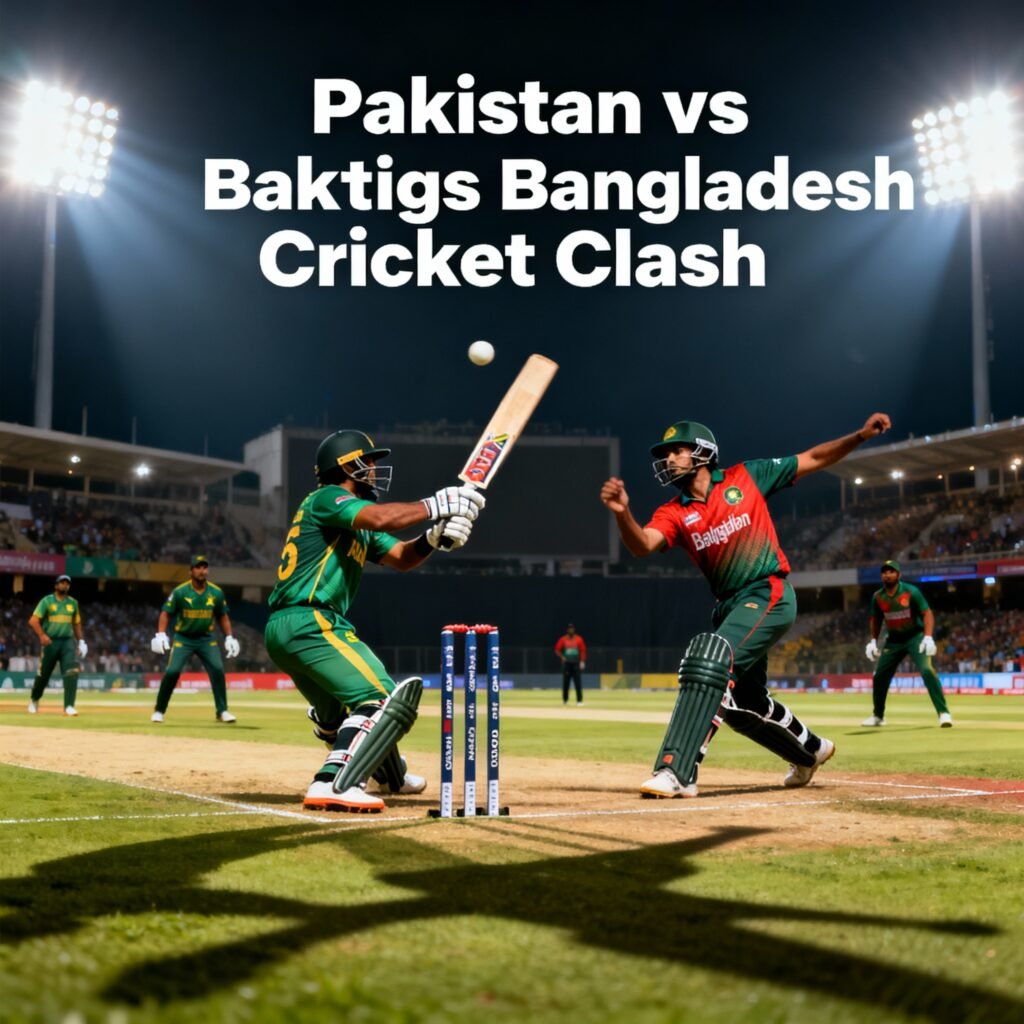In the landscape of Asian cricket, a contest between Pakistan and Bangladesh is always packed with high emotion, historical context, and the promise of unpredictable outcomes. On one side stands Pakistan, a founding powerhouse of the game. On the other, the tenacious ‘Bangla Tigers,’ who have transformed from perennial underdogs into a formidable team capable of shocking any opponent.

When these two nations meet, particularly in major tournaments like the Asia Cup, the stakes are far higher than a simple win or loss; it’s a battle for national pride and regional dominance.
📊 The Numbers Game: Who Holds the Edge?
The historical ledger largely favors Pakistan, a testament to their long-standing supremacy. However, Bangladesh’s recent resurgence has tightened the gap and injected genuine competition into the rivalry.
1. T20 Internationals (T20I)
| Statistic | Pakistan | Bangladesh |
| Total Matches | 25 | 25 |
| Wins | 20 | 5 |
| Recent Trend | Faced a 2-1 series loss in a 3-match series in 2025. | Clinched their first-ever T20I series win against Pakistan in 2025. |
Export to Sheets
Analysis: Pakistan’s overall T20 dominance is clear. However, Bangladesh’s recent historic series win on home soil (Mirpur) proved they are fully capable of turning the tables, validating their status as a dangerous T20 unit, especially in conditions that favor spin.
2. One Day Internationals (ODI)
| Statistic | Pakistan | Bangladesh |
| Total Matches | 39 | 39 |
| Wins | 34 | 5 |
Analysis: Pakistan maintains an undisputed lead in the ODI format, which spans decades. Yet, Bangladesh has delivered monumental upsets, most famously the 1999 World Cup victory and, more recently, the definitive 3-0 series sweep at home in 2015, marking their first ODI series win against Pakistan and initiating their rise.
⚔️ Key Battles: Where the Match Will Be Decided
Modern cricket clashes between Pakistan and Bangladesh usually pivot on a few critical matchups:
- Pace vs. Spin: Pakistan’s strength lies in its world-class fast bowling attack (like Shaheen Afridi and Haris Rauf), which can dismantle any batting line-up. Bangladesh’s counter is their proficient spin quartet (led by Shakib Al Hasan and Mehidy Hasan Miraz), which thrives on slow, gripping Asian pitches.
- Bangladesh’s Top Order Resilience: Batsmen like Litton Das and Towhid Hridoy must weather the initial storm of Pakistan’s pace. If Bangladesh’s top order can provide a stable platform, they allow the aggressive middle order to launch a decisive counterattack.
- The Pakistan Middle-Order Pressure: Pakistan’s middle order often struggles under pressure if their star openers fail. If key wickets of Babar Azam and Mohammad Rizwan fall early, Bangladesh can quickly exploit this vulnerability and push for a surprise win.
🏟️ Match Prediction: The Final Verdict
While the historical records lean heavily towards Pakistan, current form and the high-stakes nature of a “Virtual Semi-Final” (as seen in recent Asia Cups) means the contest is always tighter than the head-to-head stats suggest. The win probability often hovers closer to 50%−50% in knockout scenarios.
The outcome will ultimately depend on:
- Pitch Conditions: A pitch that assists spin and turns sharply offers a slight advantage to the Tigers.
- The Toss Factor: Venues like Dubai often favor the team batting second, adding significance to winning the toss.
- Handling Pressure: The team that commits fewer errors and handles the immense crowd and media pressure will be the one to prevail.
Conclusion: Experts generally give Pakistan a marginal edge (around 55%−60%) due to their superior firepower, but Bangladesh’s fighting spirit and their ability to execute strategic slow-bowling plans make them a dangerous opposition capable of engineering a significant upset.
✅ Final Regulatory Conclusion: The Governing Framework
In the same way that a cricket match is governed by weather conditions, umpiring decisions, and the DRS rules, the entire structure of the bilateral series and multi-nation tournaments is governed by official frameworks.
It is imperative to acknowledge that the scheduling of Pakistan vs. Bangladesh fixtures, their participation in global events, and the selection of venues are ultimately subject to the rules, regulations, and approvals stipulated by the International Cricket Council (ICC), the Pakistan Cricket Board (PCB), the Bangladesh Cricket Board (BCB), and relevant government policies regarding international sporting exchanges.
The future of this rivalry, including the frequency and location of their matches, remains directly tied to the political climate and the formal sporting governance enacted by these authoritative bodies.




